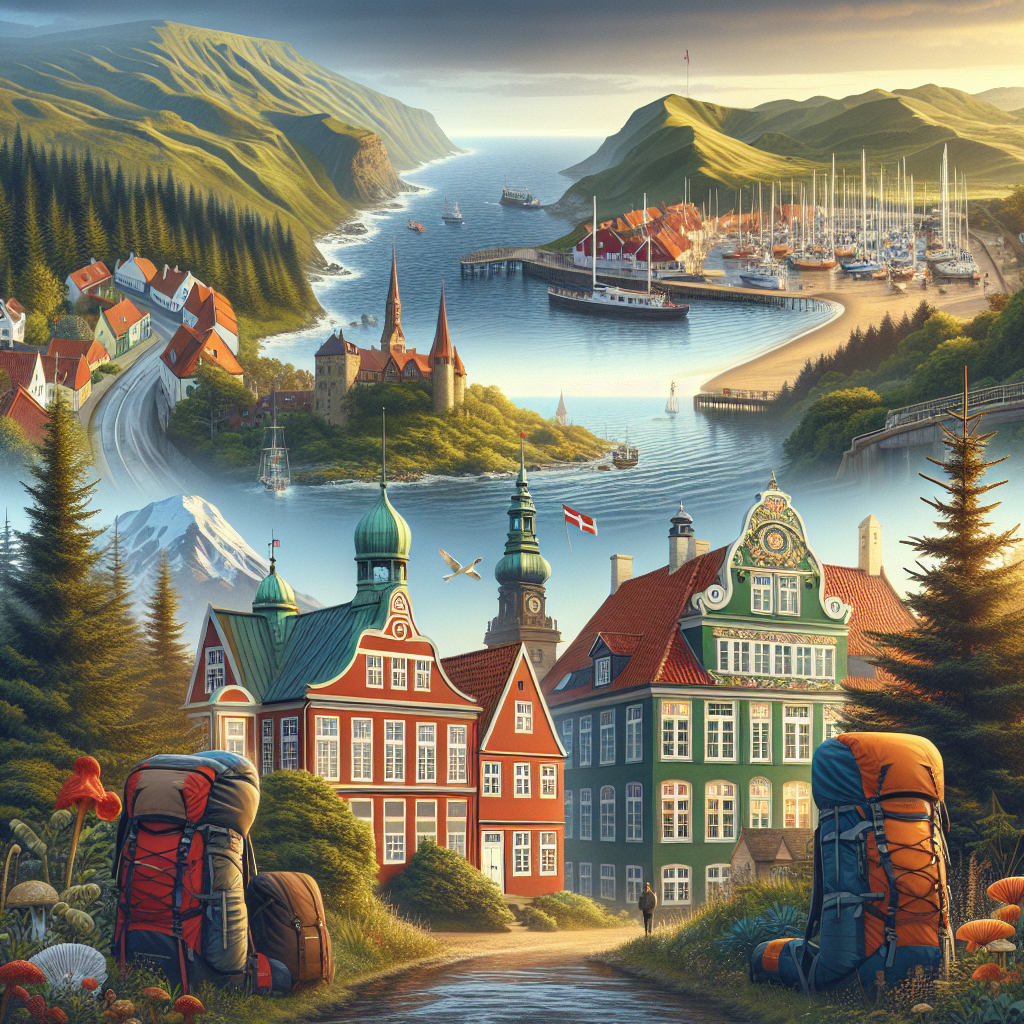The Ultimate Guide to Backpacking Through Denmark: Must-See Spots and Hidden Gems
Denmark, a small Scandinavian country, boasts a plethora of sights ranging from awe-inspiring landscapes to rich historical landmarks. Its compact size and efficient public transportation make it an ideal destination for backpackers. This guide will navigate you through Denmark’s must-see spots and introduce you to some of its hidden gems, providing you with an unforgettable experience.
Copenhagen: The Gateway to Denmark
Your Danish adventure is likely to start in Copenhagen, the country’s vibrant capital. While here, visiting the iconic statue of The Little Mermaid and strolling through the historic streets of Nyhavn are a must. For a taste of royalty, don’t miss the chance to tour Rosenborg Castle and Amalienborg Palace.
Hidden Gem: Cisternerne
For something off the beaten path in Copenhagen, head to Cisternerne, an underground museum located beneath the Søndermarken Park. It’s a mesmerizing, dimly lit world of art installations set in an old water reservoir.
The Cliffs of Møn
A few hours from Copenhagen, the Cliffs of Møn are a breathtaking natural wonder. These towering white chalk cliffs offer panoramic views of the Baltic Sea. The area is perfect for hiking, with several trails leading down to the beach below where you can find fossils among the pebbles.
Hidden Gem: Liselund Park
Nearby, the lesser-known Liselund Park on Møn Island features a romantic landscape garden and a tiny, whimsical castle. It’s a peaceful spot to enjoy the serene beauty of nature.
Aarhus: A Blend of Old and New
Denmark’s second-largest city, Aarhus, is a vibrant mix of youthful energy and historical charm. The ARoS Aarhus Art Museum and the Old Town Museum are highlights, offering insights into Danish art and life in the past.
Hidden Gem: Marselisborg Deer Park
Close to Aarhus, Marselisborg Deer Park is a delightful escape where you can walk among free-roaming deer in a large forest area. It’s an ideal spot for nature lovers.
The Viking Ship Museum in Roskilde
History buffs should not miss the Viking Ship Museum in Roskilde, just 30 minutes from Copenhagen. It houses original Viking ships and offers insights into the seafaring prowess of the Vikings.
Hidden Gem: The Energy Tower
Roskilde is also home to the Energy Tower, a modern waste-to-energy plant. While it might not sound like a traditional tourist attraction, its architecture and the role it plays in sustainability are fascinating.
Northern Jutland: Where Two Seas Meet
At the northern tip of Jutland, you can witness the unique spectacle of Skagen, where the Baltic and North Seas meet. The shifting sands and the quality of light have inspired many Danish artists.
Hidden Gem: Rubjerg Knude Lighthouse
Nearby, the Rubjerg Knude lighthouse is a sight to behold. Once abandoned and nearly swallowed by sand, it’s now a hauntingly beautiful reminder of nature’s power.
Odense: The Birthplace of Hans Christian Andersen
In Odense, the childhood home of famous storyteller Hans Christian Andersen has been turned into a museum. It’s a fascinating journey into the life and times of the author.
Hidden Gem: The Funen Village
Also in Odense, The Funen Village is an open-air museum showcasing 18th and 19th-century Danish village life. It’s less crowded than other attractions and offers a peaceful glance into the past.
Backpacking Tips for Denmark
– Transport: Invest in a Copenhagen Card for free public transport and entry to many attractions. For longer distances, consider a Eurail Pass.
– Accommodation: Hostels are plentiful and offer the chance to meet fellow travelers. Booking in advance can save you money.
– Food: Try street food markets for affordable and delicious options. Smørrebrød, a traditional Danish open sandwich, is a must-try.
Recreating the Danish Experience
Bringing a piece of Denmark into your life doesn’t require a passport. Here are a few ways to recreate the Danish experience at home:
– Hygge: Embrace the Danish concept of hygge by creating a warm, cozy atmosphere at home. Light candles, prepare a hot drink, and enjoy a good book.
– Danish Cuisine: Experiment with Danish recipes. Start with something simple like a traditional Danish pastry or smørrebrød.
– Biking: Denmark is a nation of cyclists. Recreate this by exploring your local area on a bike, adopting the Danish love for life on two wheels.
FAQ
Q: What’s the best time to visit Denmark?
A: Summer (June to August) is ideal for warmer weather and longer days. However, spring and autumn also offer beautiful natural scenery with fewer tourists.
Q: Is Denmark expensive to travel?
A: Denmark is known for its high living standards, which can make it a relatively expensive country to visit. However, with careful planning and budgeting, it’s possible to enjoy Denmark without breaking the bank.
Q: Do I need to speak Danish to travel around Denmark?
A: While Danish is the official language, most Danes speak English fluently and are usually happy to communicate in English with travelers.
Q: Can I use euros in Denmark?
A: Denmark uses the Danish Krone (DKK), not the euro. While some places might accept euros, it’s best to use the local currency.
By following this guide, you’ll experience the diverse beauty and rich history of Denmark, from its bustling cities to tranquil countryside. Whether you’re exploring well-trodden paths or uncovering hidden gems, Denmark offers a wealth of experiences that make it a perfect destination for backpackers seeking adventure.
